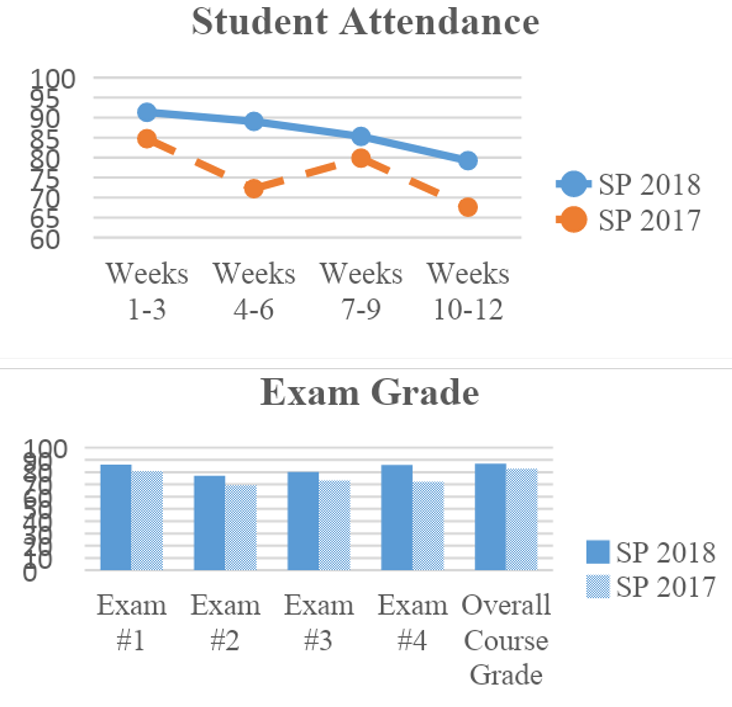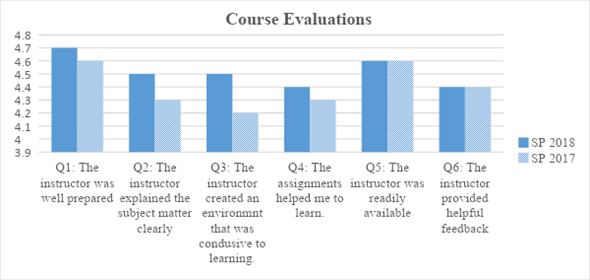Images and Videos of
Context
Although I had diversified the teaching methods and materials to accommodate students with different learning preferences, the traditional lecture was an important part in the classroom. However, the Student Evaluation of Teaching (SET) data showed that delivering lectures with PowerPoint presentation may not be an ideal way to engage students. Some students complained about the lecture being boring and less engaging. Research suggests that audience attention in lectures starts to wane every 10-20 minutes. In spring 2018, for the first time, I flipped the classroom and let students teach. According to Dr. Jean-Pol Martin’s theory of Lernen durch Lehren (learning by teaching), I believe teaching is the most effective way of learning. When students teach and lead discussions in the classroom, they have an opportunity to synthesize ideas and develop arguments, which leads to deep learning.
Step-by-Step Implementation
In order to implement this new technique in the classroom, I moved contents out of classroom and left most of the class time to students. I recorded the lectures and posted them to Canvas for students to read and listen before class. I adopted the McGraw Hill Connect with which students were required to read the chapters and do the practice problems before class in order to earn the grade for reading assignments (5%). This incentivized students to complete the readings and get prepared for class. With the contents being moved out of the class, students can use the class time for teaching, discussions and other interactive activities.
- Divide class into groups. The class were divided into groups with each choosing a chapter or topic to teach while I kept the most difficult chapters for myself. I asked students to expand their teaching material out of the textbook and do independent research for the topic. Their teaching materials were compiled from various sources, such as books, newspapers, internet, and/or other public media. Students usually listened to my lecture posted to Canvas first and asked me questions for clarifications.
- Review group presentations and assist as needed. The group that was scheduled to teach sent me their teaching plan and materials before class for my approval. My role was to assist the students to get prepared to teach and be a moderator during class. I added or explained some points that were missed or not expressed clearly by the students. When the presenters could not answer a question from the class, I stepped in and helped to clarify the question. I noticed that students were more attentive when their peers taught and more willing to join the discussions. The whole class was in a more relaxed and energetic atmosphere. From the teaching preparation and presentation, the presenting students learned much more than just reading the textbook and listen to my lecture. They collected raw materials, which were then organized in a presentable way, synthesized ideas, developed arguments, and presented to the class. The rest of the students also benefited from participating in the discussions and the presentations that cover more information than the textbook.
- Incorporate peer feedback. To assess the quality of student teaching, I incorporated peer feedback with rubric, which incentivized students to seriously prepare for the teaching.
- Test students’ knowledge. In addition, to ensure students’ comprehension of concepts after student teaching, I tested students with interactive classroom technologies (e.g., Kahoot!), with which I identified the points that were not sufficiently addressed and provided more explanations. All these activities deeply engaged students in the learning process.
Effectiveness
By engaging students with more active learning activities as discussed above, I have seen significant improvement in attendance, exam grades, and overall satisfaction of students for the course. Figure 1 below compares student attendance and exam grade between spring 2018 when I redesigned the course, and spring 2017, the most recent semester that I taught the course before spring 2018. The score for being “present”, “late” and “absent” are 100, 80, and 0, respectively. The student attendance score is the average attendance score of all students in the class. The chart shows significant improvement in attendance and exam grade in spring 2018 from spring 2017. Along with the increased attendance are the improved student performance and course evaluations. The class performance has improved significantly from spring 2017 to spring 2018. The grade for all four exams increased, and the overall course grade increased from 82.8 to 86.8 (B- to B).
Figure 1. Student Attendance & Exam Grade (Spring 2018 vs. Spring 2017)
The SET data also showed an improvement for all the questions in the course evaluations in spring 2018 from spring 2017. The most pronounced improvement is with question Q3 “the instructor created an environment that was conducive to learning”, which benefits mostly from the flipped learning.
Figure 2. Course Evaluations (Spring 2018 vs. Spring 2017)
Keywords
Associated tools or materials
- Recorded lectures
- Student-prepared teaching materials
- Canvas
- Kaltura
- Kahoot!
- McGraw Hill Connect
References
Kelchner, R., & Martin, J. P. (1998). Lernen durch Lehren. Englisch lernen und lehren–Didaktik des Englischunterrichts. Berlin: Cornelsen. S, 211-219.




